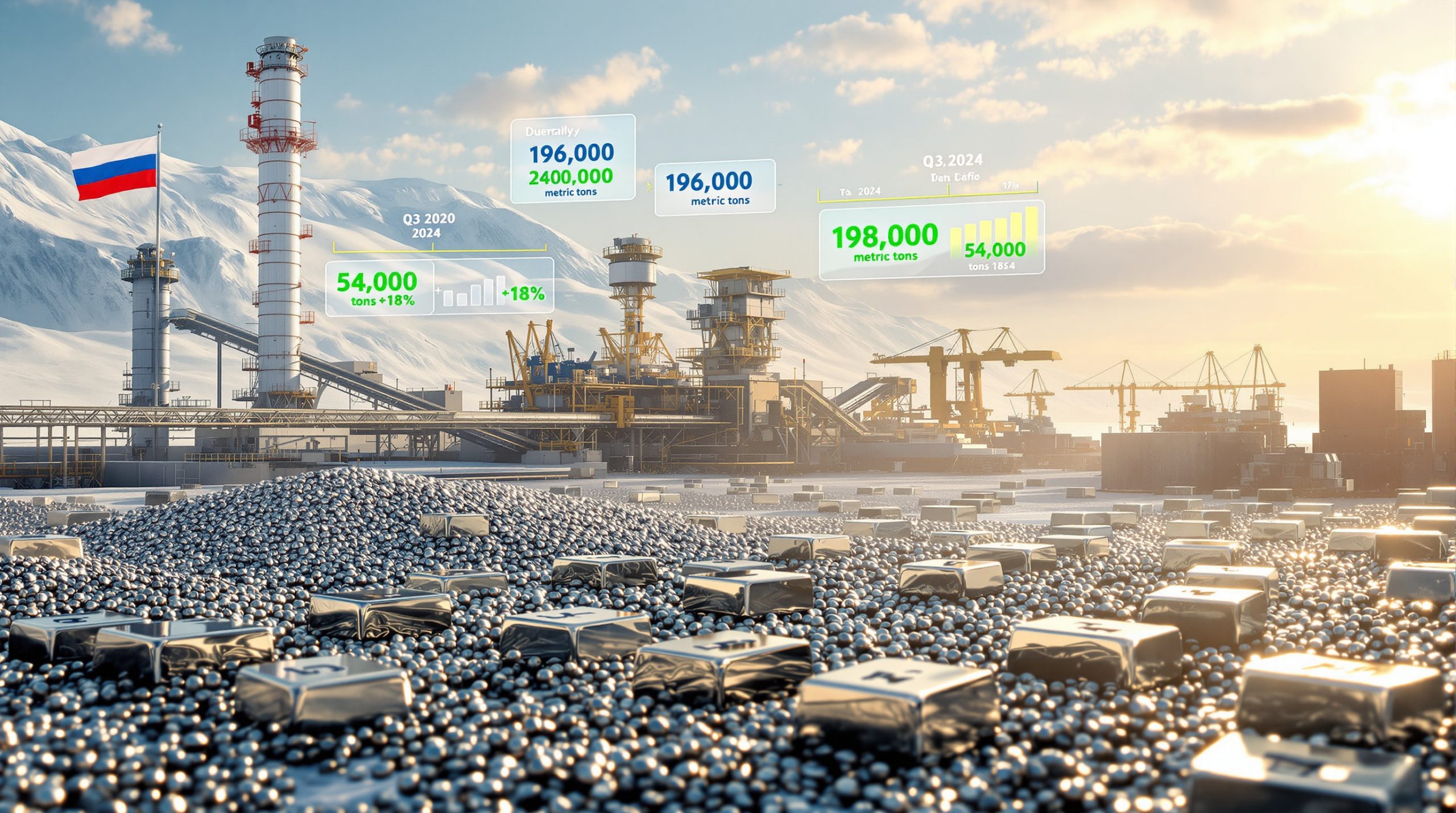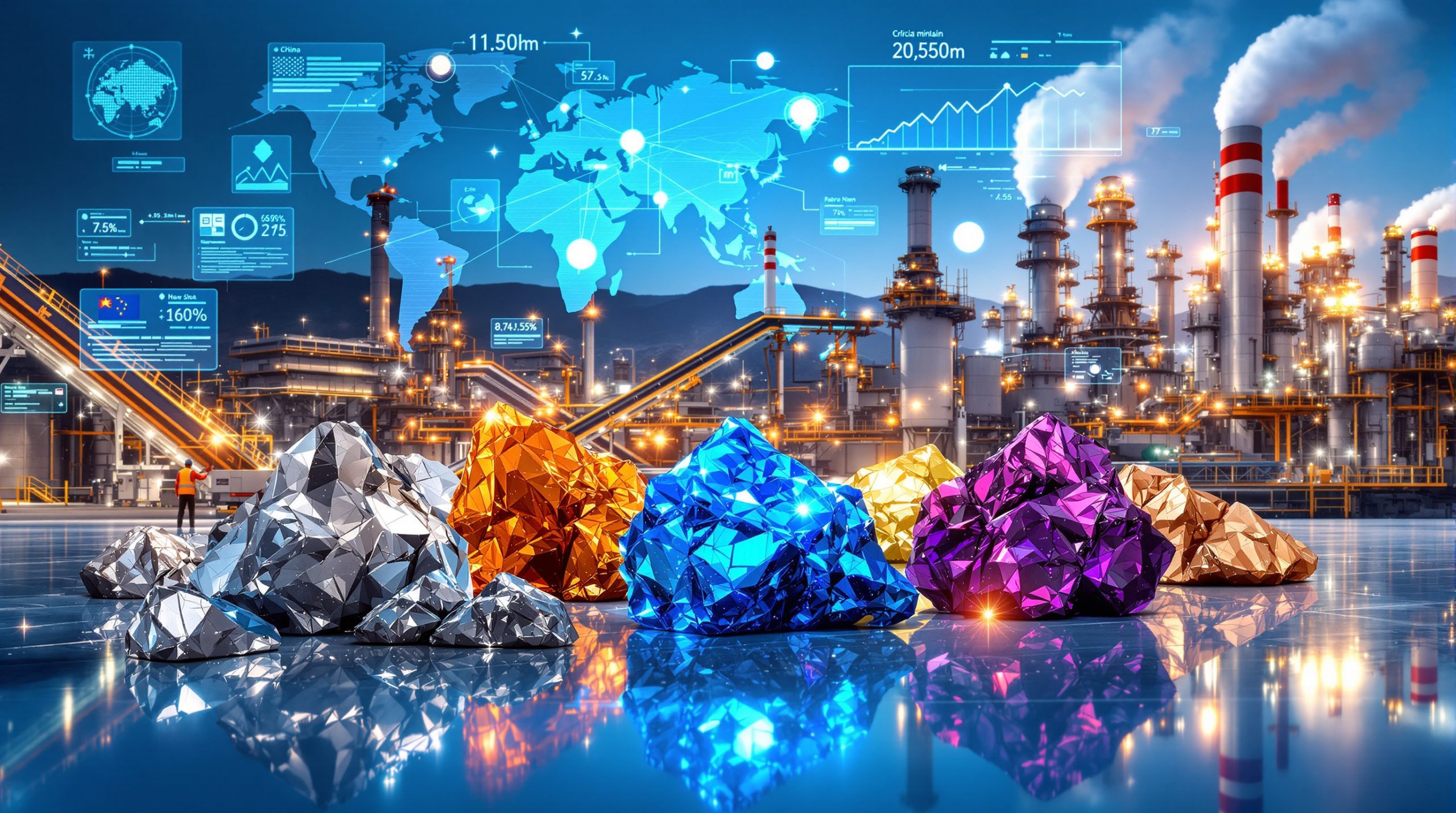What is the Critical Raw Materials (CRM) Facility?
The Critical Raw Materials (CRM) Facility represents a groundbreaking initiative launched by the European Commission in partnership with EIT RawMaterials and InnoEnergy to secure Europe's supply of essential raw materials. Established in 2023, this facility serves as the operational arm of the European Critical Raw Materials Act, with a primary mission to coordinate strategic projects that strengthen the continent's access to materials deemed crucial for economic security and technological advancement.
The CRM Facility functions as a centralized hub that brings together industry leaders, research institutions, investors, and government bodies to develop resilient supply chains for raw materials classified as "critical" due to their economic importance and supply risk. With a dedicated budget of €100 million, the facility operates through strategic investments, project development assistance, and technical advisory services to accelerate mining, processing, and recycling projects across Europe and beyond.
Unlike previous EU initiatives in this space, the CRM Facility adopts a comprehensive approach that covers the entire value chain – from sustainable extraction and processing to recycling and substitution – creating what industry insiders refer to as a "materials security ecosystem" rather than merely addressing individual supply bottlenecks.
How Will EIT RawMaterials and InnoEnergy Strengthen EU Supply Chains?
EIT RawMaterials and InnoEnergy bring complementary expertise to the CRM Facility, creating a powerful synergy to bolster European raw materials security. EIT RawMaterials, Europe's largest innovation community in the raw materials sector, contributes extensive knowledge in sustainable mining practices, material processing, and recycling technologies. Meanwhile, InnoEnergy specializes in accelerating clean energy innovations and has successfully built resilient supply chains for Europe's battery industry through initiatives like the European Battery Alliance.
Together, these organizations will employ a three-pronged approach to strengthen CRM supply chains:
First, they will identify and address strategic bottlenecks through comprehensive supply chain mapping, highlighting vulnerabilities where European dependency exceeds acceptable thresholds. This intelligence-driven approach allows for targeted interventions at the most critical points.
Second, they will mobilize significant investment capital through a dedicated CRM Fund, which aims to leverage the initial €100 million into over €2 billion of investment by attracting private capital into strategic projects. Industry analysts note this approach mirrors the successful model used for the European Battery Alliance, which transformed an initial investment into a thriving industry ecosystem.
Third, they will provide technical assistance to project developers, including feasibility studies, environmental impact assessments, and regulatory guidance, significantly reducing the time from project conception to implementation – a critical factor in an increasingly competitive global race for resources.
Which Critical Raw Materials Are Being Targeted for European Supply?
The CRM Facility focuses on 34 materials officially designated as "critical" by the European Commission, with particular emphasis on what experts call the "strategic seventeen" – materials deemed essential for the green and digital transitions that face severe supply constraints.
Among the highest priority materials are:
• Rare earth elements (particularly neodymium, praseodymium, dysprosium, and terbium) essential for permanent magnets used in electric vehicles and wind turbines
• Battery metals including lithium, cobalt, nickel, and manganese
• Semiconductor materials such as gallium, germanium, and silicon metal
• Strategic metals including titanium, aluminum, and copper
• Industrial minerals like graphite, phosphates, and borates
What makes the approach unique is the facility's strategic categorization of these materials into tiers based on supply risk, economic importance, and strategic value for European industry. For instance, the facility has designated lithium as a "tier one" priority, with targets to develop domestic extraction and refining capacity to meet at least 25% of Europe's demand by 2030.
The initiative also places unprecedented focus on what industry insiders call "technology-enabling materials" – lesser-known elements like scandium, tellurium, and indium that are used in small quantities but are critical for emerging technologies like advanced solar panels, quantum computing, and aerospace applications.
Why Is Securing CRM Supply Chains Essential for European Security?
The security implications of critical raw materials extend far beyond economic considerations, touching on national defense, energy independence, and technological sovereignty. Europe's current dependency on external suppliers – particularly China, which controls over 80% of rare earth processing and significant portions of other critical material supply chains – represents what security analysts describe as a "strategic vulnerability" that could be exploited during geopolitical tensions.
Recent supply chain disruptions have demonstrated the cascading effects of materials shortages. During the COVID-19 pandemic, magnet shortages led to production delays for medical equipment, while semiconductor materials constraints created bottlenecks across manufacturing sectors. Military analysts point out that modern defense systems require dozens of critical materials, many of which come from potentially unreliable sources.
The energy security dimension is equally significant. Europe's ambitious climate targets depend on technologies that are material-intensive – an offshore wind turbine requires over 500 kilograms of rare earth elements, while a typical electric vehicle uses six times more minerals than a conventional car. Without secure access to these materials, Europe's energy transition could stall or become prohibitively expensive.
The CRM Facility addresses these security concerns through what it terms "supply chain resilience mapping" – a sophisticated analysis that identifies not only primary dependency risks but also secondary vulnerabilities like processing bottlenecks, transportation risks, and substitution potential.
How Will the CRM Facility Create Global Partnerships?
Recognizing that Europe cannot achieve raw material self-sufficiency in isolation, the CRM Facility has developed a strategic outreach program focused on building what it terms "resource partnerships" with key supplier nations under principles of mutual benefit and sustainability. These partnerships extend beyond traditional trade relationships to include technology transfer, capacity building, and joint environmental standards.
The facility has identified three tiers of partner countries based on resource potential, governance standards, and strategic alignment:
• Tier 1 partners include Canada, Australia, and democratic African nations with significant mineral resources
• Tier 2 encompasses emerging suppliers like Argentina, Chile, and Indonesia
• Tier 3 involves early-stage exploration regions with promising geological potential
What makes these partnerships innovative is their comprehensive approach. Rather than focusing solely on extraction, they encompass entire value chains, including shared research on processing technologies, joint ventures on refining facilities, and collaboration on recycling infrastructure. For example, the facility is developing a lithium partnership with Chile that includes not only mining agreements but also joint research on direct lithium extraction technologies and processing facilities in both regions.
The partnership model also incorporates what geopolitical analysts call "values-based resource diplomacy" – linking resource agreements to improvements in environmental standards, labor practices, and local community benefits, creating an alternative to the extractive model often employed by competitors.
What Role Will Partner Countries Play in the CRM Supply Chain?
Partner countries will serve as integral components of a diversified and resilient European raw materials ecosystem, playing specialized roles based on their geological endowments, industrial capabilities, and strategic positioning. This represents a shift from traditional buyer-seller relationships to what supply chain experts call "strategic complementarity."
Resource-rich partners like Australia and Canada will function primarily as suppliers of primary raw materials, but with an emphasis on environmentally responsible extraction practices that exceed global standards. One particularly innovative aspect involves the development of what industry terms "resource corridors" – integrated infrastructure projects that improve transportation efficiency between mining regions and processing centers.
Countries with processing expertise, such as Japan and South Korea, will collaborate on refining and materials manufacturing, helping to address Europe's significant processing gap – currently one of the most vulnerable points in the supply chain. Joint ventures between European and partner country companies will establish processing hubs at strategic locations, optimizing logistics while maintaining high environmental standards.
Emerging economy partners will benefit from technology transfer and capacity building initiatives, helping them move up the value chain from raw material suppliers to processing partners. The facility has earmarked €50 million specifically for skills development programs in partner countries, focusing on sustainable mining practices, environmental management, and advanced processing technologies.
How Will the CRM Facility Support Skills Development?
Addressing the critical skills gap in Europe's raw materials sector represents one of the CRM Facility's core missions. Industry analysts estimate that Europe will need over 800,000 skilled workers across the critical materials value chain by 2030 to meet its strategic objectives, yet current educational and training capacity falls far short of this requirement.
The facility has developed a comprehensive skills development strategy operating at three levels:
At the vocational level, the initiative is establishing a network of what it calls "Materials Skills Academies" – specialized training centers equipped with cutting-edge technology and industry partnerships that provide hands-on experience in mining, processing, and recycling operations. These academies feature accelerated certification programs designed to quickly increase the skilled workforce.
At the higher education level, the facility is funding specialized master's programs and PhD research focusing on critical material innovation, with a particular emphasis on what materials scientists call "urban mining" – the recovery of valuable materials from waste streams and end-of-life products. These programs include mandated industry placements to ensure graduates possess both theoretical knowledge and practical experience.
Perhaps most innovative is the facility's "Skills Mobility Program," which facilitates knowledge transfer through exchanges between European professionals and counterparts in partner countries. This creates what workforce development experts describe as "knowledge networks" that spread best practices across global supply chains while building relationships that strengthen international partnerships.
What Are the Strategic Benefits for European Battery Manufacturers?
The CRM Facility offers transformative advantages for Europe's rapidly expanding battery manufacturing sector, which faces intense global competition. Battery producers will gain preferential access to a secure supply of critical materials like lithium, cobalt, nickel, and graphite – components that can represent up to 80% of battery production costs and are subject to severe price volatility.
By stabilizing material inputs, the facility enables manufacturers to engage in what industry strategists call "long-range production planning" – developing manufacturing capacity with confidence that material constraints won't create bottlenecks. Current estimates suggest the facility's interventions could reduce supply disruption risks by 40-60%, a critical advantage in a highly competitive market.
The initiative also addresses quality concerns through the development of standardized material specifications tailored to European battery requirements. Battery chemists note that consistent material quality is essential for performance, longevity, and safety – yet the current fragmented supply chain often delivers materials with significant variability.
Perhaps most significantly, the facility supports Europe's push toward next-generation battery technologies through what materials scientists call "materials innovation partnerships" – collaborative research programs focusing on substituting scarce materials with more abundant alternatives. These include silicon-dominant anodes, sodium-ion batteries, and solid-state electrolytes – technologies that could significantly reduce dependency on constrained materials.
How Does the CRM Facility Support Europe's Industrial Competitiveness?
The CRM Facility operates as a catalyst for European industrial renewal, particularly in strategic sectors facing intense global competition. By addressing material supply constraints, the initiative removes what economists describe as an "innovation bottleneck" that has limited European manufacturing competitiveness.
The facility's impact extends across multiple industrial sectors:
For renewable energy manufacturing, secure access to materials like silicon, silver, indium, and rare earths enables European companies to scale production of solar panels, wind turbines, and energy storage systems without supply constraints – potentially increasing the continent's global market share from current levels of 11% to a targeted 25% by 2030.
In the digital technology sector, the initiative's focus on semiconductor materials including gallium, germanium, and high-purity silicon supports Europe's ambitious chip manufacturing goals under the European Chips Act, reducing dependency on Asian suppliers for these foundational components.
For advanced manufacturing, the facility's work on specialty metals and alloys ensures that European aerospace, defense, and precision engineering companies maintain access to materials meeting their exacting specifications – materials that industrial analysts note are increasingly subject to export restrictions from traditional suppliers.
The initiative also employs what innovation experts call "pre-competitive collaboration" – facilitating cooperation between companies on common material challenges while maintaining healthy competition in end products, an approach that accelerates innovation while reducing redundant research efforts.
What Makes This Project Groundbreaking for European Raw Materials Strategy?
The CRM Facility represents a paradigm shift in European resource policy, moving beyond the limitations of previous approaches to create what policy experts describe as the first "comprehensive materials security architecture" on the continent. Several elements make this initiative particularly revolutionary:
Unlike previous EU resource initiatives that focused primarily on research or regulatory frameworks, the CRM Facility combines strategic planning with substantial financial resources and implementation capacity, enabling it to move from concept to concrete projects with unprecedented speed. Early results show project development timelines reduced by 40% compared to traditional approaches.
The initiative's governance structure represents an innovation in itself, bringing together public institutions, private industry, and research organizations in what organizational theorists call a "triple helix model" that balances strategic guidance with operational flexibility. This allows the facility to act with the strategic vision of a public institution while maintaining the agility of a private enterprise.
Perhaps most groundbreaking is the facility's integrated approach to the entire materials life cycle – from primary extraction through processing, manufacturing, and eventually recycling and reuse. This creates what circular economy experts call "material feedback loops" where end-of-life products become sources for new production, gradually reducing dependency on virgin materials.
The initiative also pioneers advanced market mechanisms including strategic stockpiling, long-term offtake agreements, and innovative financial instruments designed specifically for raw materials projects – creating what economists term "market stabilizing interventions" that reduce volatility while maintaining appropriate price signals.
How Will the CRM Facility Reduce European Dependencies on Foreign Suppliers?
The CRM Facility employs a sophisticated strategy to systematically reduce Europe's vulnerability to foreign material dependencies through what supply chain experts call a "multi-lever approach" – addressing not just the symptoms but the structural causes of dependency.
The first pillar involves diversification of primary supply sources, targeting a reduction in single-supplier dependency to below 65% for all critical materials by 2030 – a significant improvement from current levels where single suppliers control over 90% of some materials. This includes both developing domestic European resources and establishing secure partnerships with multiple external suppliers.
The second pillar focuses on processing capacity – currently Europe's most significant vulnerability. The facility is supporting the development of what industry terms "strategic processing hubs" for materials including rare earths, lithium, and cobalt, aiming to establish domestic processing capability for at least 40% of Europe's needs by 2030. This represents a reversal of the decades-long trend of offshoring processing capacity to Asia.
The third pillar leverages Europe's comparative advantage in recycling technology to create what circular economy specialists call "urban mines" – systematic recovery of valuable materials from waste streams. The facility targets recovery rates exceeding 70% for key battery materials and 50% for rare earths by 2030, significantly reducing the need for virgin materials.
Perhaps most forward-looking is the facility's substitution research program, which funds development of alternative materials and technologies that can reduce dependency on the most constrained resources. Materials scientists note that substitution can often deliver the most sustainable long-term solution to supply constraints.
What Expertise Do EIT RawMaterials and InnoEnergy Bring to This Project?
EIT RawMaterials and InnoEnergy contribute complementary capabilities that create a powerful implementation engine for the CRM Facility, combining deep technical knowledge with proven business acceleration expertise. This partnership represents what organizational theorists call "capability stacking" – leveraging specialized competencies from different organizations to address complex challenges.
EIT RawMaterials brings unparalleled expertise in geological assessment, sustainable mining practices, and processing technologies, drawing on a network of over 120 partners spanning industry, research, and academia. Their technical specialists have evaluated more than 200 European mining projects, developing what mining engineers call "risk-calibrated assessments" that identify the most promising opportunities for rapid development.
Their materials processing knowledge is particularly valuable, as it addresses what industry insiders identify as the "missing middle" in European supply chains – the conversion of raw materials into high-specification products suitable for high-tech manufacturing. The organization has already developed breakthrough processing technologies for materials including rare earths, lithium, and specialty metals.
InnoEnergy contributes proven business acceleration capabilities, having successfully launched over 300 startups with a remarkable 97% success rate – far exceeding typical venture capital outcomes. Their methodology incorporates what entrepreneurship experts call "stage-gated investment" – providing targeted support at each development phase while maintaining rigorous performance standards.
Their experience building the European Battery Alliance provides a tried-and-tested template for creating industrial ecosystems around strategic technologies. This initiative transformed Europe from a minor player in battery production to a rapidly growing competitor with over €100 billion in investments and more than 20 gigafactories under development – a model the CRM Facility seeks to replicate for critical raw materials.
How Will the CRM Facility Support Sustainable Mining Practices?
The CRM Facility places sustainability at the core of its mission, recognizing that Europe's resource security cannot come at the expense of environmental standards or social responsibilities. The initiative applies what environmental experts call a "full-spectrum sustainability approach" that encompasses environmental, social, and governance (ESG) challenges throughout the supply chain.
For European mining projects, the facility has developed what industry terms "sustainability by design" principles – integ
Ready to Discover the Next Major ASX Mineral Opportunity?
Stay ahead of the market with Discovery Alert's proprietary Discovery IQ model, delivering real-time notifications on significant ASX mineral discoveries and turning complex data into actionable investment insights. Understand how major mineral discoveries can lead to exceptional returns by exploring our dedicated discoveries page.




